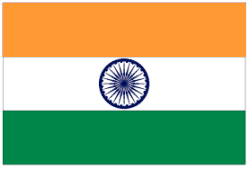Aamchi Mumbai, a city of seven islands, the Financial capital of India and often described as a city of dreams has indeed been a place where many have made a fortune !
Lakhs of Mumbaikars have received 'free housing' since 1990s, thanks to the slum rehabilitation authority (SRA). Twenty years after SRA was introduced to rehouse eligible slum families free of cost in new buildings, the scheme has allowed builders to rake in super-normal profits. Mumbai now officially has 3,293 slum clusters. The SRA has, for the first time, carried out a Geographic Information System (GIS) mapping of slums across the city, which shows that slum clusters are spread over 9,008 acres or 36.45 sq km.
In this entire journey of sorts, encroachers have got away with free houses, developers made their big bucks and ruling parties in that process got their brownie points and vote bank secured. Salaried class tax payers have continued to fund this party, however. What choice do they have !.
The question is, will this free partying stop ever. Why are we tolerant of the continued encroachments in Mumbai.
Check out this video recently shot at Bandra Kurla Complex, financial district of Mumbai.
https://www.youtube.com/watch?v=hUpdmlUqzCs&feature=youtu.be
Real estate rates hover at around INR 40,000 per sqft in BKC and one can imagine the significance of continued encroachments. The other issue is the rampant rise in filth and lack of public sanitation in such an encroached land. The corporation has over 30,000 cleaners, full fledged anti-encroachment drive team which has full support of the police. However there are neither any significant control measures against encroaching dwellers nor any penalties for rising filth. Will an additional cleanliness cess help in making Mumbai clean ? Absolutely not, because where there is no real political intent no amount of funding will help !!
While the free partying continues, Mumbai's dream of becoming a Shanghai or Singapore will remain a dream forever !!
Lakhs of Mumbaikars have received 'free housing' since 1990s, thanks to the slum rehabilitation authority (SRA). Twenty years after SRA was introduced to rehouse eligible slum families free of cost in new buildings, the scheme has allowed builders to rake in super-normal profits. Mumbai now officially has 3,293 slum clusters. The SRA has, for the first time, carried out a Geographic Information System (GIS) mapping of slums across the city, which shows that slum clusters are spread over 9,008 acres or 36.45 sq km.
In this entire journey of sorts, encroachers have got away with free houses, developers made their big bucks and ruling parties in that process got their brownie points and vote bank secured. Salaried class tax payers have continued to fund this party, however. What choice do they have !.
The question is, will this free partying stop ever. Why are we tolerant of the continued encroachments in Mumbai.
Check out this video recently shot at Bandra Kurla Complex, financial district of Mumbai.
https://www.youtube.com/watch?v=hUpdmlUqzCs&feature=youtu.be
Real estate rates hover at around INR 40,000 per sqft in BKC and one can imagine the significance of continued encroachments. The other issue is the rampant rise in filth and lack of public sanitation in such an encroached land. The corporation has over 30,000 cleaners, full fledged anti-encroachment drive team which has full support of the police. However there are neither any significant control measures against encroaching dwellers nor any penalties for rising filth. Will an additional cleanliness cess help in making Mumbai clean ? Absolutely not, because where there is no real political intent no amount of funding will help !!
While the free partying continues, Mumbai's dream of becoming a Shanghai or Singapore will remain a dream forever !!
